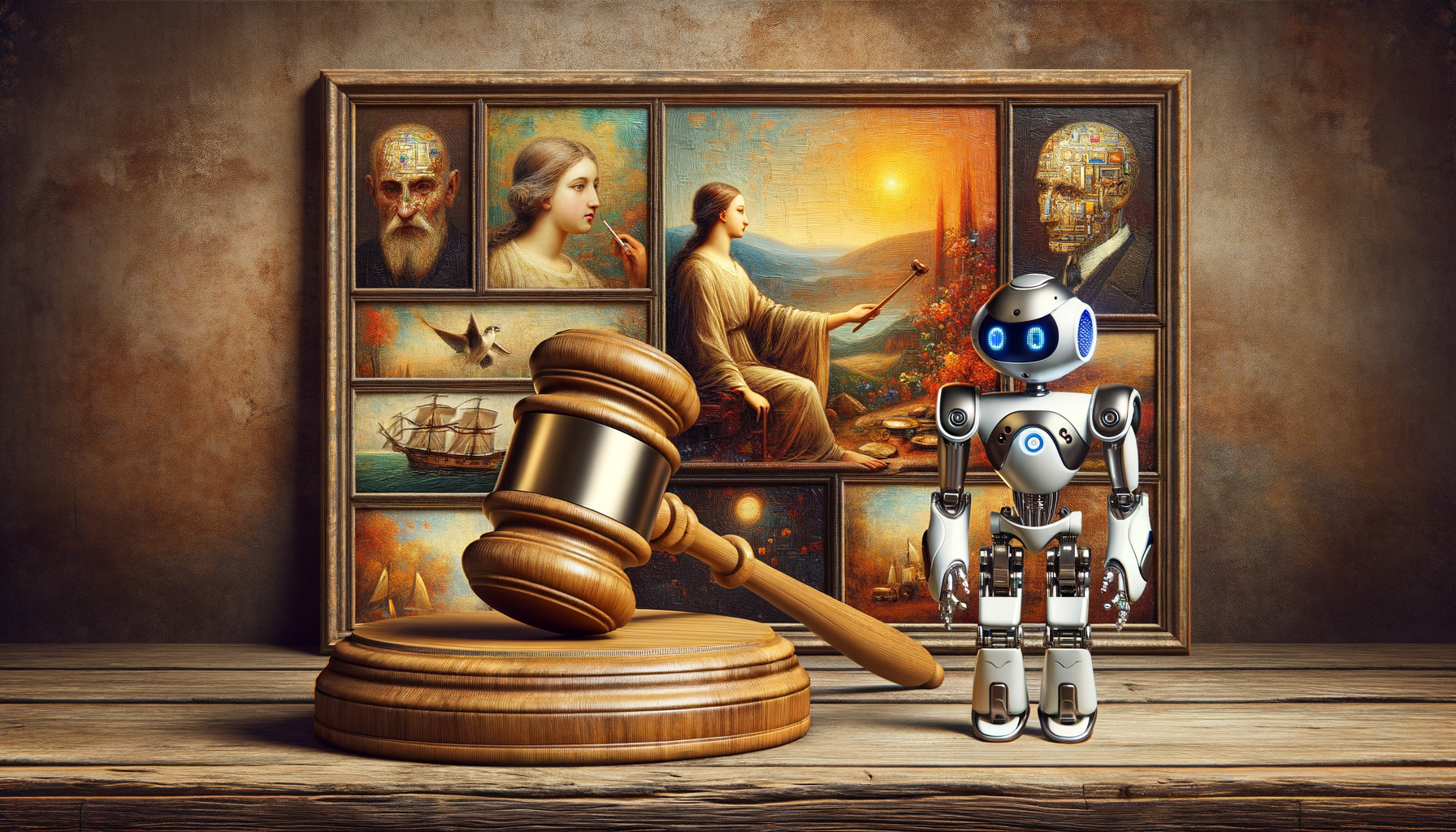
Understanding the Intersection of AI Art Generators and Copyrighted Works
In the ever-evolving landscape of artificial intelligence, AI art generators have emerged as a groundbreaking tool that can create stunning visuals and artworks. These generators are built upon complex algorithms and neural networks that have been trained on vast datasets of images. However, a critical point of contention in the world of AI-generated art is the reliance on human-made artworks during training, which often includes copyrighted material. Let’s delve into the nuances of this issue and understand its implications for artists, consumers, and the AI community.
The Role of Human-Made Art in Training AI Models
AI art generators such as DALL-E, Artbreeder, and DeepDream have garnered attention for their ability to produce unique and captivating images. These generators use a type of machine learning known as Generative Adversarial Networks (GANs) or other deep learning models to learn the patterns, styles, and techniques found in a wide array of art. To do so effectively, they require extensive datasets, which are often sourced from the internet where countless images of artworks are available.
While the goal is to enable the AI to understand and replicate artistic styles, the process inevitably involves the consumption of copyrighted artworks. This raises questions about the legality and ethics of using these works without explicit permission from the original creators.
Copyright Concerns in AI-Generated Art
Copyright laws are designed to protect the rights of creators, giving them exclusive control over how their works are used. When an AI is trained on copyrighted images, it is effectively learning from the creative expression of those artists. This poses a potential infringement on copyright, especially if the AI-generated images closely resemble the originals or if the training data was used without proper licensing.
The challenge here is that copyright law has not fully caught up with the rapid advancements in AI. There is a legal grey area regarding whether AI-generated images are derivative works or entirely new creations. Moreover, determining liability is complex—is it the AI developers, the platform hosting the AI, or the end-users who generate the artwork?
Implications for Artists and the Art Industry
Many artists feel that the use of their work to train AI without compensation or attribution undermines their livelihood and devalues their contributions. There are also concerns about AI-generated art flooding the market, making it harder for traditional artists to compete.
Conversely, AI art generators have democratized the process of creating art, allowing those without traditional art skills to express their creativity. This has led to a new market for AI-generated artworks and has pushed the boundaries of what is considered art.
Navigating Ethical Practices
To address these concerns, some AI developers are taking steps to ensure ethical practices. This includes seeking permissions for datasets, giving credit to original artists, and creating clear guidelines on the use of AI-generated art. Transparency in how models are trained and the sources of their datasets is crucial for fostering trust and respect between AI developers and the artistic community.
AI Art Generators on the Market
For those interested in exploring AI-generated art, there are several tools available online. While we discuss the implications of their use, it’s important to be aware of the ethical considerations before diving in. Here are a few AI art generators that you might want to explore:
- DALL-E: Known for creating whimsical and surreal images based on text prompts.
- Artbreeder: Allows users to blend and morph images to create new artworks.
- DeepDream: Famous for its dream-like, hallucinogenic visuals generated by a neural network.
Final Thoughts
The intersection of AI art generators and copyrighted works is a complex issue that touches on legal, ethical, and creative domains. As AI continues to evolve, it is imperative that we establish frameworks that protect the rights of artists while fostering innovation. The dialogue between AI developers, artists, and legal experts must continue to ensure that the future of AI-generated art is built on a foundation of respect and fairness.
As consumers and creators, we have a responsibility to be informed and considerate about the sources and tools we use to create and consume art. By understanding the implications of AI art generators and advocating for ethical practices, we can enjoy the benefits of AI while supporting the rights and efforts of artists around the world.